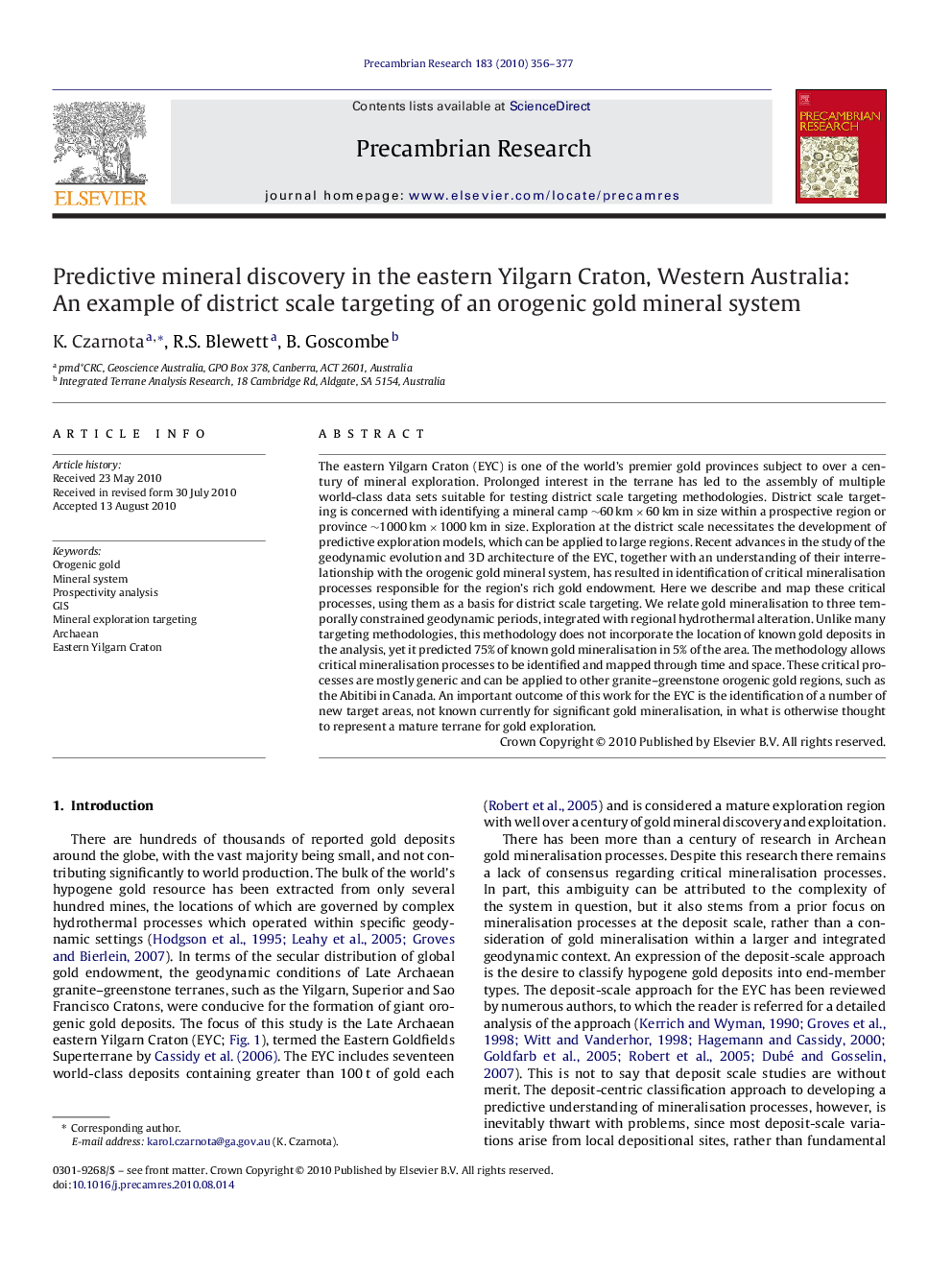| Article ID | Journal | Published Year | Pages | File Type |
|---|---|---|---|---|
| 4723783 | Precambrian Research | 2010 | 22 Pages |
The eastern Yilgarn Craton (EYC) is one of the world's premier gold provinces subject to over a century of mineral exploration. Prolonged interest in the terrane has led to the assembly of multiple world-class data sets suitable for testing district scale targeting methodologies. District scale targeting is concerned with identifying a mineral camp ∼60 km × 60 km in size within a prospective region or province ∼1000 km × 1000 km in size. Exploration at the district scale necessitates the development of predictive exploration models, which can be applied to large regions. Recent advances in the study of the geodynamic evolution and 3D architecture of the EYC, together with an understanding of their interrelationship with the orogenic gold mineral system, has resulted in identification of critical mineralisation processes responsible for the region's rich gold endowment. Here we describe and map these critical processes, using them as a basis for district scale targeting. We relate gold mineralisation to three temporally constrained geodynamic periods, integrated with regional hydrothermal alteration. Unlike many targeting methodologies, this methodology does not incorporate the location of known gold deposits in the analysis, yet it predicted 75% of known gold mineralisation in 5% of the area. The methodology allows critical mineralisation processes to be identified and mapped through time and space. These critical processes are mostly generic and can be applied to other granite–greenstone orogenic gold regions, such as the Abitibi in Canada. An important outcome of this work for the EYC is the identification of a number of new target areas, not known currently for significant gold mineralisation, in what is otherwise thought to represent a mature terrane for gold exploration.
